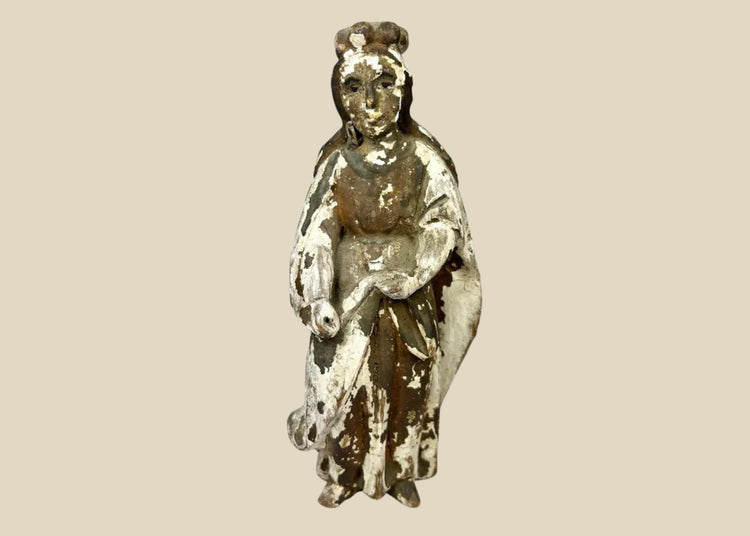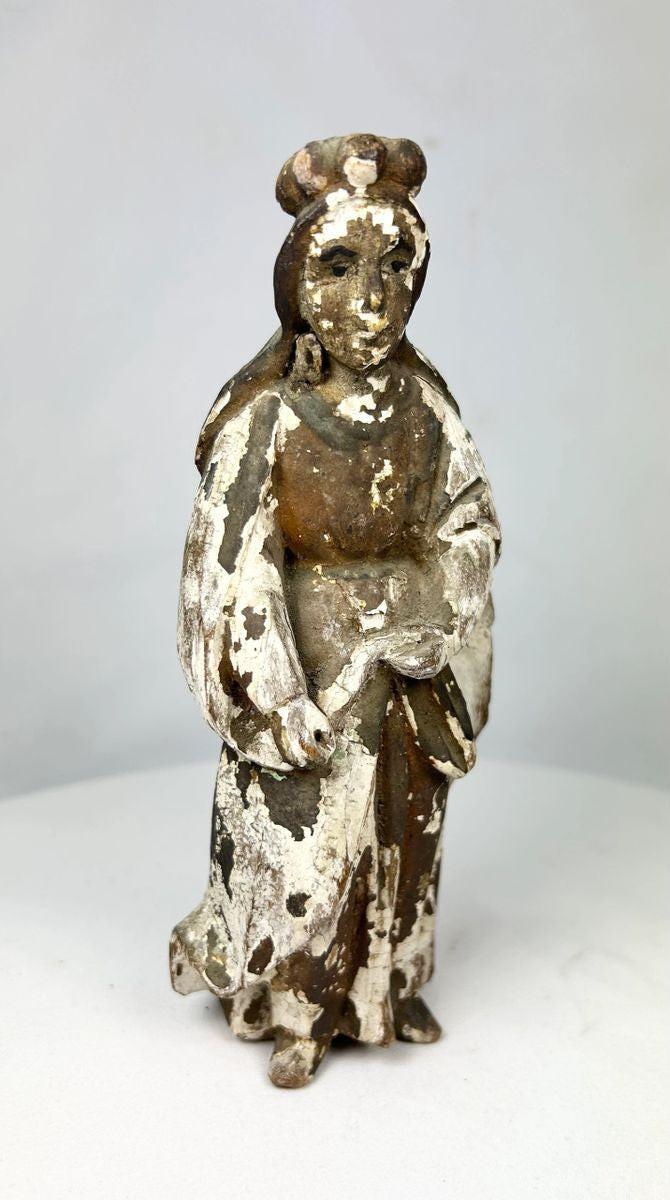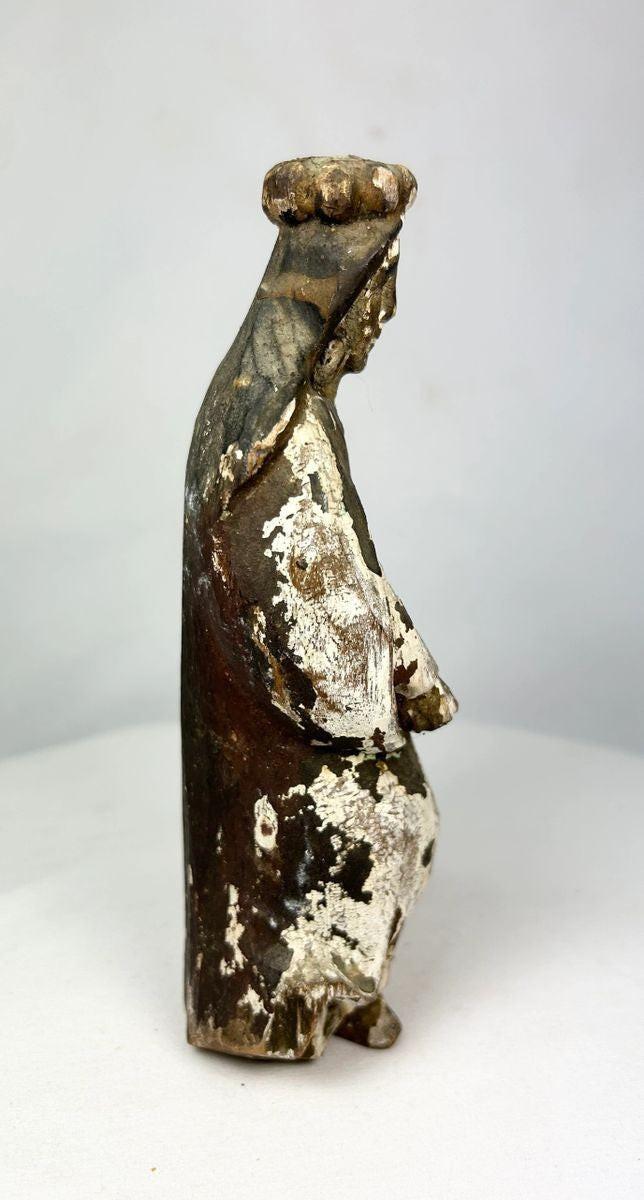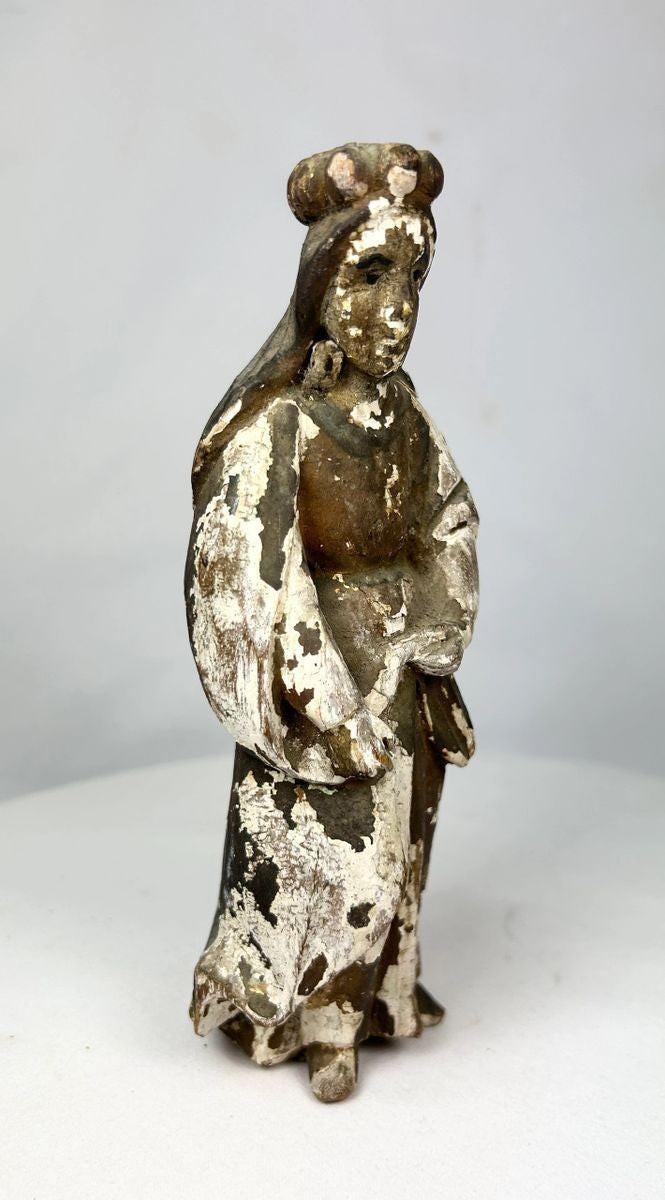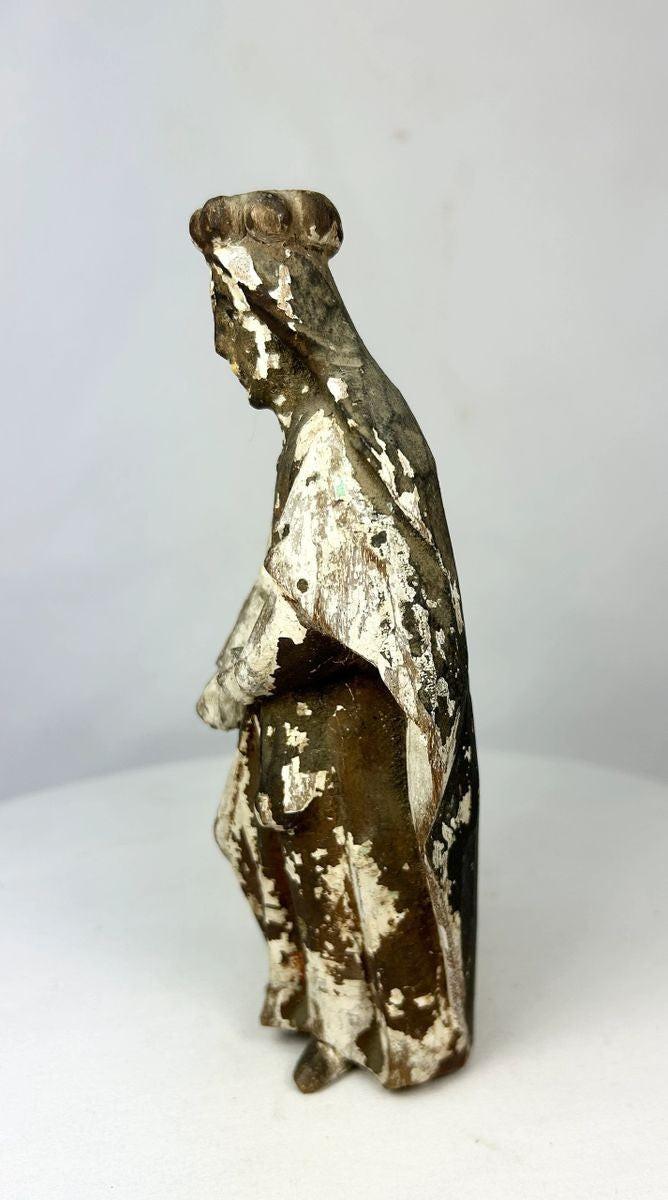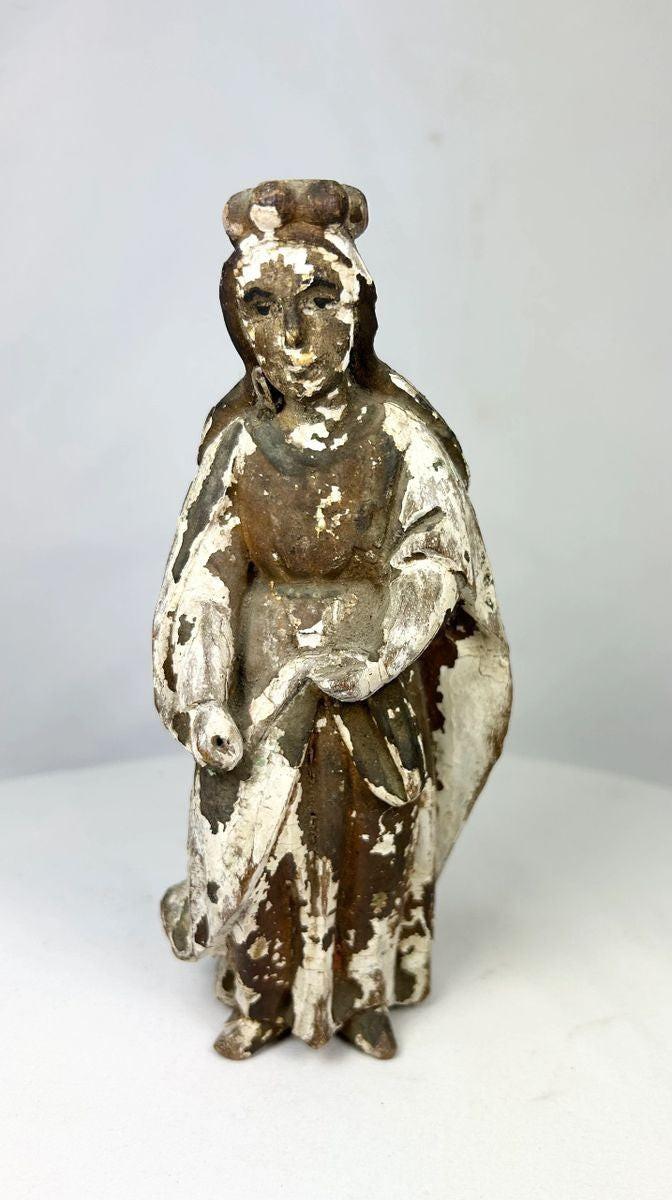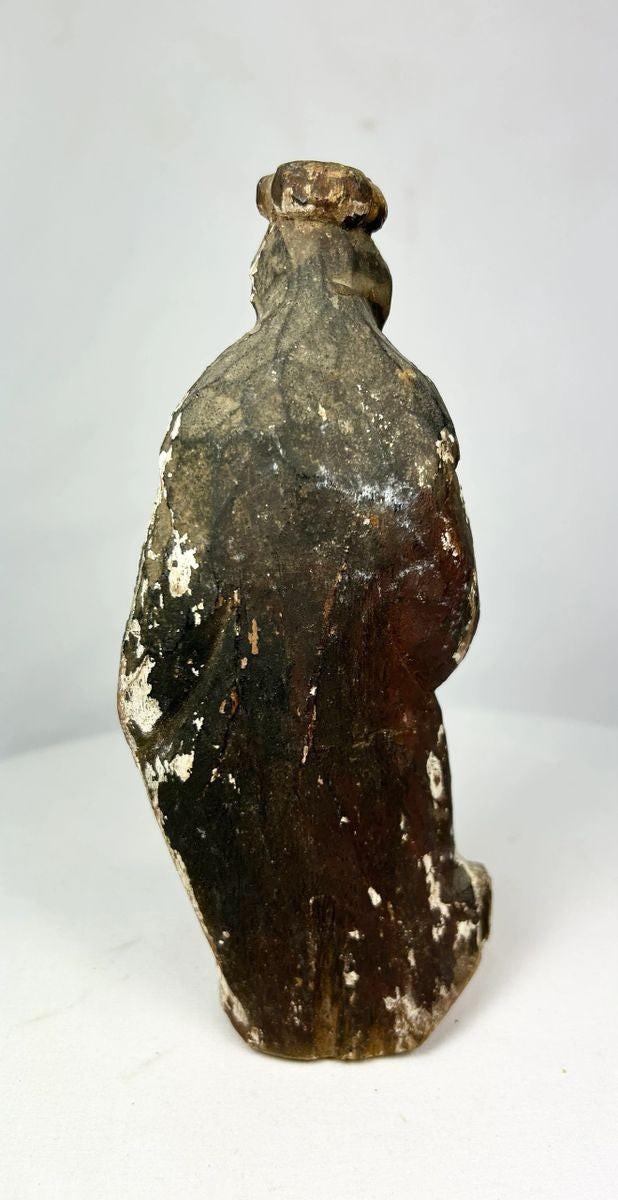Spanish Colonial Santo Hand-Carved Wooden Religious Statue Circa 18th-19th C
Description
More
Less
Historical Context & Origin
Region: Spanish Colonial, likely Philippines or South America
Material: Hand-carved wood with remnants of polychrome and gilt paint
Period: 18th–19th Century
Description
This finely carved Spanish Colonial santo is a devotional religious figure created for use in churches, private chapels, or processions. Likely representing a saint or the Virgin Mary, the figure stands with open hands in a gesture of blessing or supplication. It retains traces of its original gilding and polychrome paint, while the worn surface and natural splitting of the wood speak to centuries of veneration and use. The statue is mounted on an integral wooden pedestal, adding stability and authenticity.
Features
- Hand-carved wooden figure with expressive devotional form
- Remnants of original gilding and polychrome paint
- Mounted on integral pedestal base
- Gesture of open hands symbolizing blessing or supplication
- Natural surface patina and aged finish
Cultural Significance
Santos were central to Catholic devotion in the Spanish colonies, embodying the fusion of European religious traditions with local craftsmanship. They served as tangible focal points for prayer, processions, and community worship. This santo exemplifies the enduring religious and cultural values of the Spanish colonial world, making it a meaningful relic of both faith and artistry.
Condition
The figure remains structurally stable despite visible wear. Traces of its original gilding and polychrome are present, with natural cracks, losses, and surface erosion consistent with its age. These features contribute to its authenticity and devotional history.
Dimensions (approximate)
Height: 13 in (33 cm)
Age
Estimated 200–300 years old
Learn More
Explore the tradition and craftsmanship of Spanish Colonial devotional sculpture: Santos: Spanish Colonial Religious Art – Norton Simon Museum
Browse available santos and sacred carvings in our collection: Shop Spanish Colonial Santos – Relic And Rarity
Description
Historical Context & Origin
Region: Spanish Colonial, likely Philippines or South America
Material: Hand-carved wood with remnants of polychrome and gilt paint
Period: 18th–19th Century
Description
This finely carved Spanish Colonial santo is a devotional religious figure created for use in churches, private chapels, or processions. Likely representing a saint or the Virgin Mary, the figure stands with open hands in a gesture of blessing or supplication. It retains traces of its original gilding and polychrome paint, while the worn surface and natural splitting of the wood speak to centuries of veneration and use. The statue is mounted on an integral wooden pedestal, adding stability and authenticity.
Features
- Hand-carved wooden figure with expressive devotional form
- Remnants of original gilding and polychrome paint
- Mounted on integral pedestal base
- Gesture of open hands symbolizing blessing or supplication
- Natural surface patina and aged finish
Cultural Significance
Santos were central to Catholic devotion in the Spanish colonies, embodying the fusion of European religious traditions with local craftsmanship. They served as tangible focal points for prayer, processions, and community worship. This santo exemplifies the enduring religious and cultural values of the Spanish colonial world, making it a meaningful relic of both faith and artistry.
Condition
The figure remains structurally stable despite visible wear. Traces of its original gilding and polychrome are present, with natural cracks, losses, and surface erosion consistent with its age. These features contribute to its authenticity and devotional history.
Dimensions (approximate)
Height: 13 in (33 cm)
Age
Estimated 200–300 years old
Learn More
Explore the tradition and craftsmanship of Spanish Colonial devotional sculpture: Santos: Spanish Colonial Religious Art – Norton Simon Museum
Browse available santos and sacred carvings in our collection: Shop Spanish Colonial Santos – Relic And Rarity
You May Also Like




















